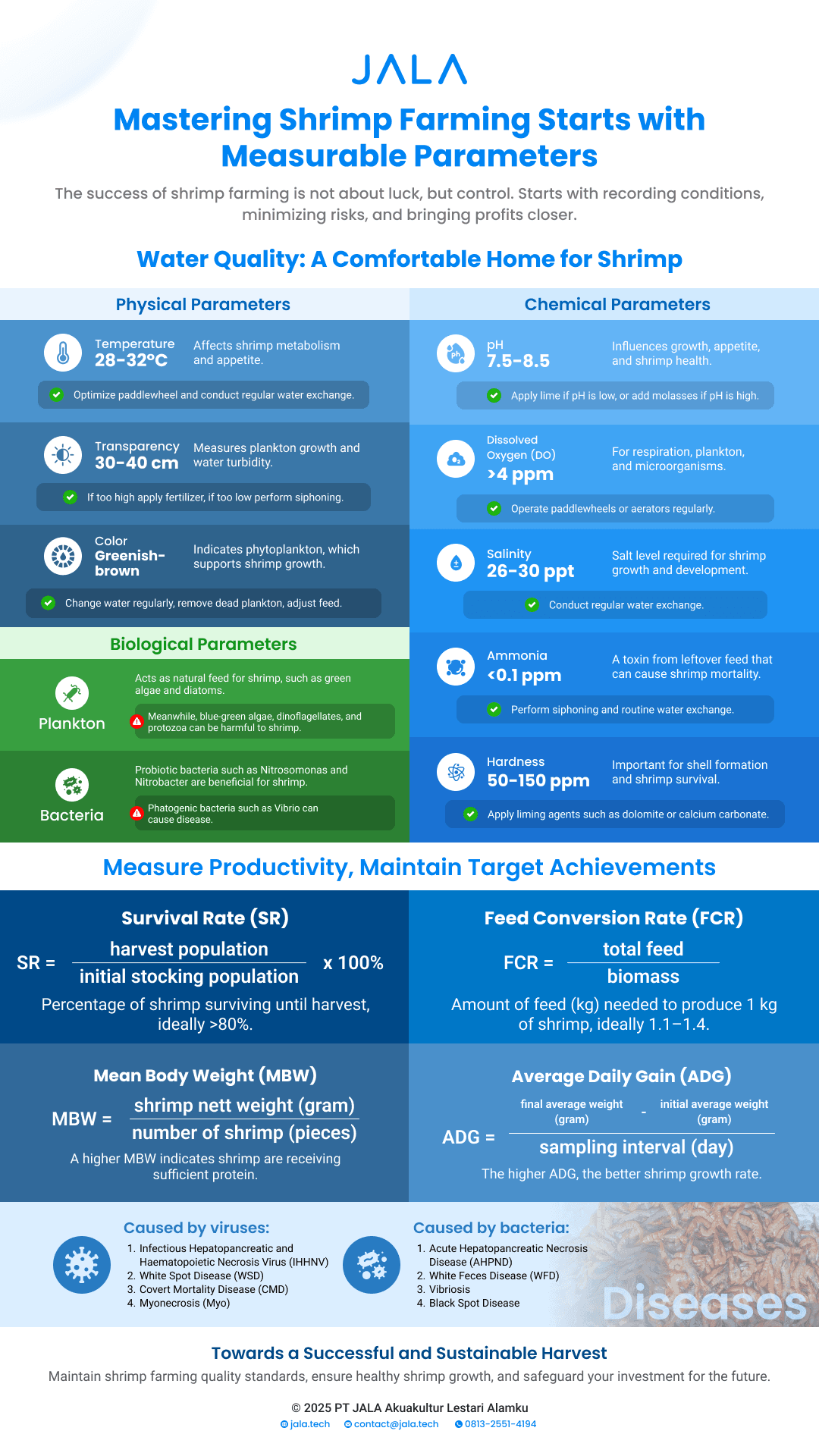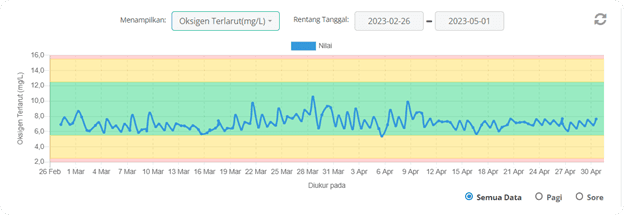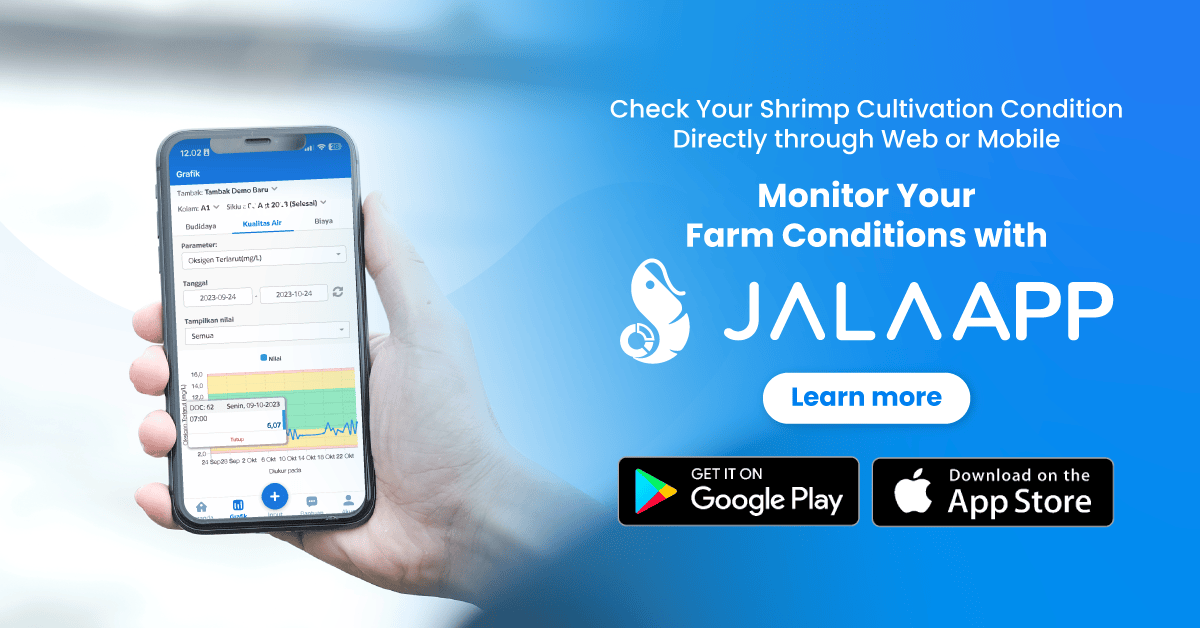
The success of shrimp cultivation has much to do with the water quality in the pond. Water quality can be assessed based on physical, chemical, and biological parameters. Physical parameters include temperature, color, and turbidity. Chemical parameters include dissolved oxygen, pH, and salinity, while biological parameters include the presence of plankton and bacteria in the water.
The importance of water quality monitoring
The presence of these factors makes water quality highly important for farmers. Therefore, farmers need to monitor water quality regularly. Monitoring water quality is all the efforts farmers do in observing, recording, and evaluating the quality of water as a guidance in taking appropriate measures in their pond.
Read more: Toxic Compounds in Shrimp Ponds
By regularly monitoring water quality, farmers can increase the chances of a successful cultivation. High-quality water will help shrimp survive and grow well, leading to the achievement of productivity targets. Without monitoring water quality, farmers cannot be aware of the conditions of their cultivation and, as a result, cannot anticipate problems such as shrimp diseases and more.
How to monitor water quality
Monitoring water quality requires regular measurement of specific water parameters at certain times each day. Some farmers still rely on instinctive measurements, and some may even taste the pond water to estimate its condition. This method is highly discouraged as it is not accurate and can be harmful.
The recommended monitoring method involves using measuring instruments specifically designed to accommodate the measurement of certain water parameters. For example, a pH meter is used to measure pH, a refractometer is used for salinity, and a thermometer is used for temperature. Additionally, there are also multiparameter measuring devices available that can measure multiple parameters at once, such as JALA Baruno. Some other parameters may require laboratory testing, such as bacterial population measurements.
Read more: Water Source Quality Standard for Shrimp Cultivation

Farmers usually measure water quality in the morning and afternoon. Measurements in the morning can be done around 05.00-06.00 as dissolved oxygen (DO) and pH are at their lowest points. In the afternoon, around 12.00-14.00, DO and pH reach their highest points, so measurements are conducted again.
From the measuring devices, farmers obtain numerical data representing the water quality. These numbers can be recorded and compared over time, while referring to existing water quality standards to determine if they are met or not. If the standards are not met, the next step is to take appropriate treatments to improve the parameters that need adjustment.
To further facilitate water quality monitoring, farmers can also use shrimp farm monitoring applications such as JALA App as a more convenient and easy alternative to manual recording. This approach helps farmers stay informed about the conditions of their ponds even when they are far away from them.
How to read water quality data
For example, using data measured from JALA Baruno and recorded on JALA App, a certain farmer obtains the following dissolved oxygen (DO) readings:

If the water quality monitoring data for DO shows normal readings which fall within the standard of ≥ 4 ppm, farmers do not need to take any extra measures. However, if the DO drops below this, farmers can increase the DO by using an aerator.
Regular water quality monitoring helps farmers gain clear information about their farm water quality. Water quality should be measured regularly to anticipate any unexpected changes that need to be corrected with the right treatment.
The good news is, JALA is #HeretoHelp with JALA App, a farm management app to ease daily water quality monitoring. With JALA App, you can record water quality parameters and track the conditions in real time.
Let's experience it firsthand by registering yourself at app.jala.tech or download the mobile version at Google Play Store or App Store!






